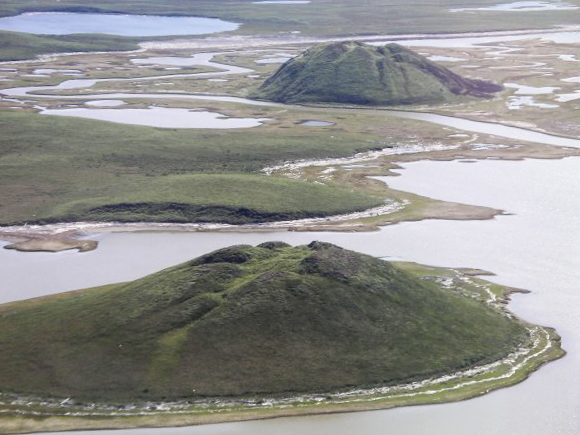Have You Seen A Pingo Lately?
A pingo is a mound of earth-covered ice found in the Arctic and sub Arctic reaching up to 70 meters high and up to 900 meters in diameter. A pingo is a periglacial land form, or a form of patterned ground that is a characteristic of colder climates such as the Arctic or sub-Arctic. The term originates from the Inuvialuktun word for a small hill.

Periglacial is a term used to characterize an environment located on the margin of former glacially active territory. Most of these regions now have layers of permafrost beneath the the top layer of soil. However, freeze and thaw cycles can influence landscapes outside areas of past glaciation. Periglacial environments are regions where freezing and thawing alter the landscape significantly.

Pingo locations in the Canadian Arctic.
They are essentially formed by ground ice which forms during the winter when temperatures dip below the freezing point. When ground water seeps into cracks in the ground it freezes and creates “lenses” of ice which slowly increase in mass as more and more water trickles in. As they grow larger in sizes, the ground above rises from the source forcing the ground to form huge domes. Pingos can be 50-metres high and 900-metres wide. In some, the ice lens has melted and the dome has collapsed into a volcano-shaped hill.plural form is “pingos”.


